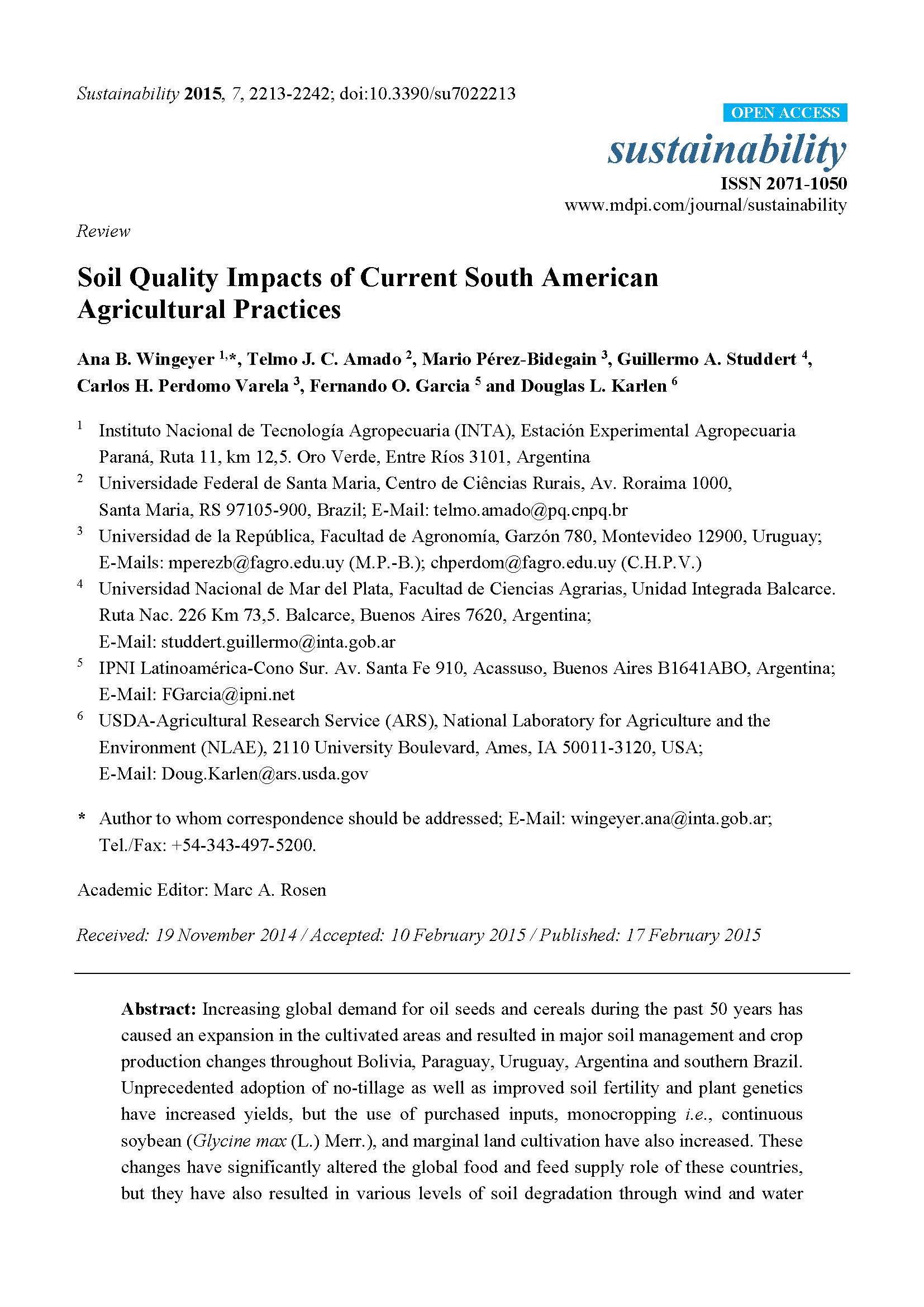Ver ítem
- xmlui.general.dspace_homeCentros Regionales y EEAsCentro Regional Entre RíosEEA ParanáArtículos científicosxmlui.ArtifactBrowser.ItemViewer.trail
- Inicio
- Centros Regionales y EEAs
- Centro Regional Entre Ríos
- EEA Paraná
- Artículos científicos
- Ver ítem
Soil quality impacts of current South American agricultural practices
Resumen
Increasing global demand for oil seeds and cereals during the past 50 years has caused an expansion in the cultivated areas and resulted in major soil management and crop production changes throughout Bolivia, Paraguay, Uruguay, Argentina and southern Brazil. Unprecedented adoption of no-tillage as well as improved soil fertility and plant genetics have increased yields, but the use of purchased inputs, monocropping i.e., continuous soybean (Glycine max
[ver mas...]
Increasing global demand for oil seeds and cereals during the past 50 years has caused an expansion in the cultivated areas and resulted in major soil management and crop production changes throughout Bolivia, Paraguay, Uruguay, Argentina and southern Brazil. Unprecedented adoption of no-tillage as well as improved soil fertility and plant genetics have increased yields, but the use of purchased inputs, monocropping i.e., continuous soybean (Glycine max (L.) Merr.), and marginal land cultivation have also increased. These changes have significantly altered the global food and feed supply role of these countries, but they have also resulted in various levels of soil degradation through wind and water erosion, soil compaction, soil organic matter (SOM) depletion, and nutrient losses. Sustainability is dependent upon local interactions between soil, climate, landscape characteristics, and production systems. This review examines the region’s current soil and crop conditions and summarizes several research studies designed to reduce or prevent soil degradation. Although the region has both environmental and soil resources that can sustain current agricultural production levels, increasing population, greater urbanization, and more available income will continue to increase the pressure on South American croplands. A better understanding of regional soil differences and quantifying potential consequences of current production practices on various soil resources is needed to ensure that scientific, educational, and regulatory programs result in land management recommendations that support intensification of agriculture without additional soil degradation or other unintended environmental consequences.
[Cerrar]

Autor
Wingeyer, Ana Beatriz;
Amado, Telmo Jorge Carneiro;
Pérez Bidegain, Mario;
Studdert, Guillermo;
Perdomo Varela, Carlos Honorio;
García, Fernando O.;
Karlen, Douglas L.;
Fuente
Sustainability 7 (2) : 2213-2242. (2015)
Fecha
2015
Editorial
Society for Urban Ecology
ISSN
2071-1050
Formato
pdf
Tipo de documento
artículo
Palabras Claves
Derechos de acceso
Abierto
 Excepto donde se diga explicitamente, este item se publica bajo la siguiente descripción: Creative Commons Attribution-NonCommercial-ShareAlike 2.5 Unported (CC BY-NC-SA 2.5)
Excepto donde se diga explicitamente, este item se publica bajo la siguiente descripción: Creative Commons Attribution-NonCommercial-ShareAlike 2.5 Unported (CC BY-NC-SA 2.5)


